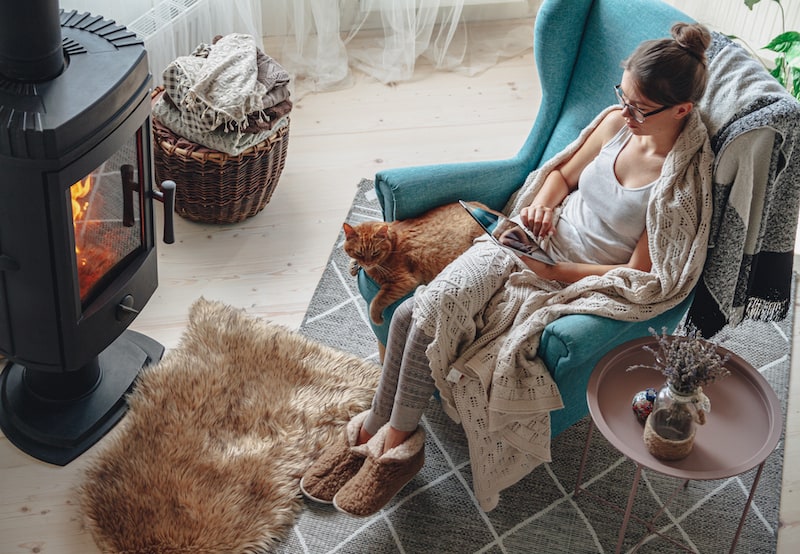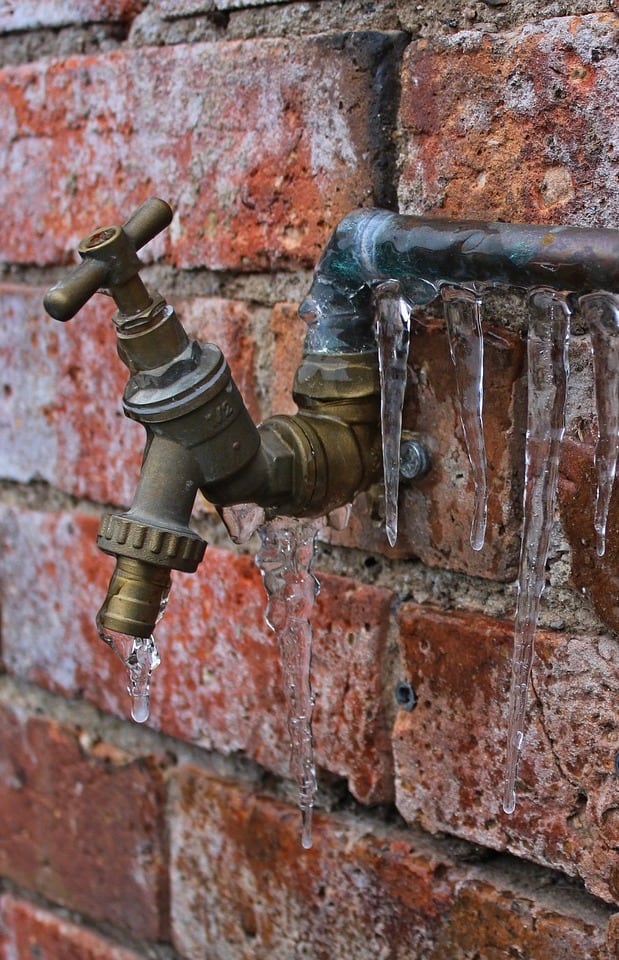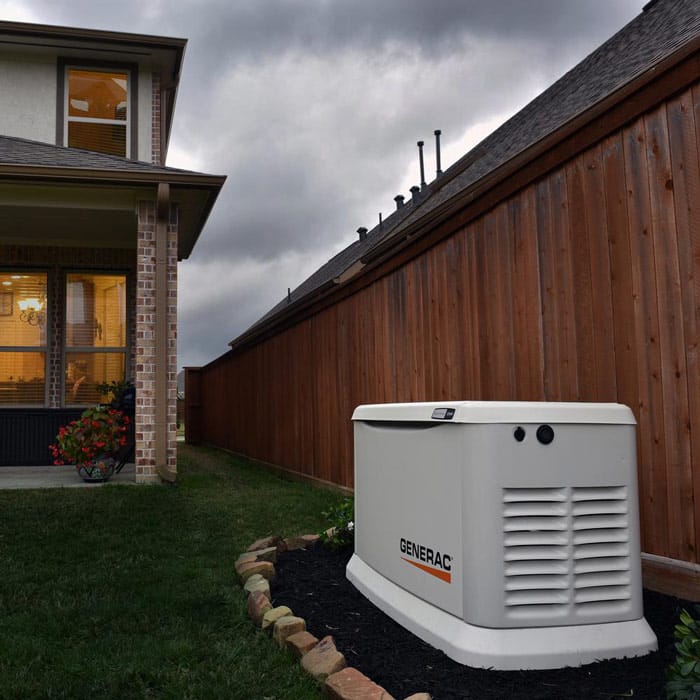Winter can be hard on our homes, and the costs of keeping our home warm and cozy can be hard on our wallets. The physical demands of freezing temperatures and winter storms can damage unprotected plumbing or cause leaks in a worn-out roof. And poorly maintained furnaces may not be able to handle the demands that are placed upon them. Follow this guide to make sure that your home is well-prepared for what’s coming in the winter months.
You don’t have to live in a cold northern state to feel the effects of winter. Even in our sunny state of Texas, the winter months have the potential for extended cold snaps, plus winter storms bringing snow and ice. An unprepared or poorly maintained home can suffer as a result, resulting in discomfort or significant repair bills.
Properly winterizing your home will both protect your home from potential damage caused by cold temperatures or snow and ice accumulations, plus make your domicile more comfortable and energy-efficient. A comprehensive approach to winterization will touch on many aspects of your home, including your HVAC system, plumbing, roof and windows, and more.
All of the actions you’ll take for winterization will not only protect your home from the elements, but they’ll also make sure that it’s in tip-top shape all through the year.

There are many ways you can increase your home’s value, and we can generally break these down into two separate categories: maintenance and improvements.
Maintenance covers the many things you should be doing regularly to keep your home in tip-top condition. Regular painting, maintenance of appliances and HVAC systems, and keeping up on your landscaping are some examples.
Improvements are a big category. Home improvements can range from small detailed projects like painting a room or replacing old carpet, to major remodeling and renovation projects. Small projects can be a great way to channel your inner DIY spirit, while large projects may require the use of contractors and other professionals. Different home improvement projects can also yield different payoffs in the value they add to your home.
Let’s examine some of the smartest ways to add value to your home.

A smart place to begin your winterization process is with your plumbing. In extreme cases, cold weather can cause pipes to freeze and burst, causing extensive damage and a big repair bill, according to the Insurance Institute for Business and Home Safety. There are several smart steps you can take to winterize your plumbing to make sure that cold weather won’t affect it.
Preparing your indoor pipes
It doesn’t take much to cause your pipes to freeze. Under the right conditions, even a short period of time below freezing can cause big problems if your pipes aren’t protected. To protect your pipes, the first step is to evaluate what pipes might be at risk of freezing. Pipes in unheated crawl spaces or basements or pipes that are adjacent to uninsulated walls can be at risk and need to be given proper attention. Some typical locations that may be at risk also include laundry or utility rooms that are adjacent to unheated garages.
Protect vulnerable pipes by keeping cold air away from them. Blocking open vents and openings leading to crawl spaces can provide significant protection to pipes in these areas. Another smart move is to insulate pipes using pipe insulation materials you can purchase from home improvement stores. Be sure to cover exposed pipes in unheated garages or other areas that may not have heat.
During serious cold snaps, you can protect exposed pipes in bathrooms and kitchens by opening cabinets and vanity doors to let warmer air from the room into these spaces. This is important when the pipes are adjacent to an outdoor wall. In extreme cases, placing a space heater near the open doors will provide even more protection. But be sure to keep space heaters away from flammable objects and surfaces at all times.
Don’t forget outdoor pipes and plumbing
It’s easy to forget about your outside plumbing. But these elements are just as, or even more, vulnerable to damage from freezing temperatures. Here are some common-sense steps you can take to protect these assets.
Do you need upgrades?
Because of the added stress of the season and other factors, some household appliances are more likely to fail during the winter. In particular, those that are in colder areas of the house will be in the greatest jeopardy. Be sure to give some attention to these.

Of all the systems in your home, your heating is one of the most vital. Whether your heat comes from a stand-alone furnace or is part of an integrated HVAC system, a well-maintained and operating system will make your home more comfortable during the cold winter months. And since we spend more time indoors during the winter, a clean system with adequate filtration will help keep us healthy too.
Have regular service performed
A well-maintained furnace will perform more efficiently when you need it. That means your home will be warmer and your heating expenses will be lower. Be sure to schedule a service call for your system before the winter months. And while you’re at it, consider a Team Enoch membership yearly maintenance plan. You’ll save money and ensure that your home’s vital systems are in tip-top condition.
If your system is old, this might be the time to think about replacing some of the vital components or upgrading to a new system. Today’s HVAC and furnace systems are much more efficient than those of even a few years ago. Check out this primer for some of the options available.
Change filters to keep your air cleaner
The filters for your furnace or HVAC system will be replaced during regular servicing, but you shouldn’t wait for a technician to get this job done. Familiarize yourself with the location of your system’s air filters and change them at least every three months. If you keep pets in your home, have a large family, or use a fireplace, consider doing it even more frequently, particularly in the winter months.
The type of filter you use can make a difference. Inexpensive fiberglass filters will do a good job, but you can improve the cleanliness of your home’s air by upgrading to pleated or HEPA filters. This guide from HVAC.com can help educate you on the best options for your home.
Add a UV filter
Most of us spend a lot of time indoors, but during the winter that time increases. It only makes sense to breathe the cleanest possible air while we’re in our homes. Mold, mildew, bacteria, and viruses are only some of the potential pollutants that can taint our indoor air, so a comprehensive solution is one of the best ways to tackle this problem. A whole-home UV filter is a smart way to go about it.
Filters like the REME HALO provide a comprehensive way to reduce dust, dander, and odors. And this filter can eliminate up to 99% of airborne viruses, including the COVID-19 virus. Contact us to learn more about these filters, and to set up an appointment or get an estimate.
Upgrade to a smart thermostat.
Smart thermostats that connect to the internet make it easy to set schedules for your home’s temperature. And they’ll even let you control the thermostat while you’re away, through your smartphone. You can save money by using your furnace more efficiently, while also ensuring that you’ll always step into a warm home when you come home from work or trips.
Keeping the elements out is your home’s primary task. So an important part of winterizing your home is checking the integrity and soundness of your home’s physical structure — the roof, windows, and more.
Checking our roof
Your roof is the first line of defense protecting your home’s interior from the elements. If your roof is in need of repair or replacement, the stress of snow or ice buildup, plus the effects of windy winter storms can be the final straw that causes real trouble.
For a deep dive into inspecting your roof, check out this handy guide. Meanwhile, be on the alert for these telltale signs of trouble.
Clean and inspect the gutters
Fall leaves can clog your gutters, causing water to backup and freeze. As ice builds up during a cold snap the added weight can pull gutters out of position and damage them. While you’re cleaning the gutters, make sure they’re securely fastened to your eaves. If your gutters are loose or pulled out of position, now’s the time to get them fixed.
Inspect and seal your windows
The windows in our home are responsible for much of our heating and cooling costs. Old, poorly insulated and leaky windows can tax your home’s furnace during cold snaps and contribute to high energy bills. Here are some tips on how to prepare your windows for winter.

Winter storms, particularly ice storms, can create havoc with power supplies. If a significant number of power lines go down, you could be without power for days. It’s a smart idea to have some sources of backup power available for your home. Here are three options to consider.
Portable power packs
For light-duty power needs consider a portable power pack. These combine a battery and an inverter so you can power small household appliances and electronics. They can be recharged from the 12-volt DC outlets in your car or from external solar panels. While useful for some applications, like powering a few lights or recharging a laptop, they don’t have the power to run furnace systems or space heaters.
Portable generators
Portable generators that run on gasoline or propane come in a variety of sizes and offer much more robust power output. If your portable generator is big enough you may be able to operate space heaters or the blower motors of your HVAC system. Consult with an electrician or HVAC technician to determine the power needs of your furnace before investing in a portable generator.
Whole-home standby generators
For true energy security, consider a standby generator. Standby generators are designed to operate automatically if the power goes out, and if sized properly, can supply most or all of your home’s electrical needs. Learn more about standby generators with this guide.
Here are a few more smart ideas to help you prep your residence and your property for the winter.
Clean your chimney.
If you have a fireplace in your home, make sure that it’s cleaned professionally. Tar and creosote can build up in the winter months, and animal nests can be established when you’re not using it.
Maintain your trees and other plants
Prune overhanging branches from near your home. Don’t forget driveways too — the last thing you want is a limb falling on top of a parked car.
Prepare to remove snow and ice
If you experience a significant snow or ice event, you don’t want to be caught unprepared. Be sure you’ve got a snow shovel or two, plus de-icing chemicals to melt ice on your steps, driveway, and sidewalks.
